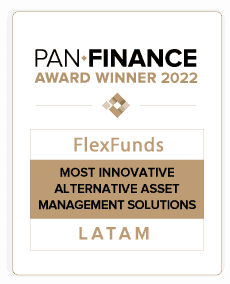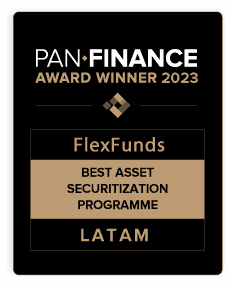In a challenging economic environment and the threat of a possible global recession, investors are turning to alternative investments at a time of high volatility for traditional assets. Looking ahead to 2023, they are seeking to hedge against high inflation and generate returns in an environment of high-interest rates in the world’s major economies.
The post-pandemic period has brought new economic challenges as a consequence of the war in Ukraine, the impact of which has been particularly manifest in recent months in the severe European energy crisis that threatens to put further pressure on the household economy on that continent.
The winds of recession have increased worldwide as significant economies such as the U.S. continue to raise interest rates to contain inflation, which reached 8.3% annually in August. All eyes are focused on the FED’s rate decisions.
While this is happening, there is uncertainty among investors due to the volatility of the stock markets. Alternative investments such as real estate, hedge funds, and venture capital, among others, are positioned as an essential option despite the apparent challenges, as analyzed by FlexFunds, a company specializing in the set up and launch of investment vehicles.
Why are these investments gaining strength?
The current context challenges investors to diversify their portfolio, and alternative assets are an option as they have just that quality. They offer exposure to various baskets and strategies to obtain returns above the stock market and bonds.
The post-pandemic economic recovery has generated a shake-up in financial strategies. It has even made us rethink the old formula when defining a 60/40 portfolio, which referred to 60% of it being made up of equities and 40% in fixed-income assets.
On this point, Daniel Maccarrone, managing director at Morgan Stanley, said: “This split may have worked well back when equities climbed steadily to new records and interest rates fell to near zero, but investors who take this approach face some key challenges today.“
As a result, he argues that some hedge fund strategies may offer even more attractive risk/return potential than bonds and the stock market. This will also depend to a large extent on the strategy applied and the manager selected to carry out the plan.
In the current context, alternative investments’ advantages could also be associated with their low correlation with the stock markets. Somehow it keeps investors away from these risks, while the strategies applied to try to take advantage of the inefficiencies that may occur to obtain above-average returns.
Some alternatives
Alternative investments can be divided into three main groups: tangible assets, private equity, and private credit. While, as a whole, they may be illiquid instruments, they also have the quality that “potential returns can be higher,” as noted by U.S. investment management firm BlackRock.
“Because of the difficulties in selling and valuing illiquid investments, many investors expect a risk premium, which can make alternative assets more profitable,” explains their key advantages.
Examples include hedge funds, an alternative that aims to achieve returns whatever the market environment by benefiting from upward or downward trends. Also noteworthy is FIBRAS, an investment instrument with fixed and variable income characteristics that allows acquiring shares in real estate without having to buy one directly.
The alternative investment portfolio includes, among others, exchange-traded funds, which seek to replicate the performance of a basket of assets or an index such as the S&P 500 to obtain returns from those movements.
Opportunity outlook for 2023
According to industry figures, alternative assets under management currently total an estimated US$13 trillion worldwide, maintaining a steady growth since 2010, when they barely reached US$4.1 trillion.
Despite the current challenges, alternative assets under management are expected to maintain an upward trend with a compound annual growth rate of 9.8%. Assets under management could increase in 2023 to $14.2 trillion, then jump to $15.6 trillion in 2024 and $17.2 trillion in 2025.
2021 was an inflection year for alternative assets, marking significant results in segments such as hedge funds and private equity, which led to much of this dynamic after the pandemic. The current economic situation poses new challenges for the industry. Still, as traditional assets show lower yields, institutional investors are looking to these alternative instruments to maximize their capital, protect themselves from inflation and shield themselves from external shocks that put pressure on 2023, which could bring many opportunities for this activity.
Sources:
- https://www.wsj.com/livecoverage/stock-market-news-today-09-13-2022/card/u-s-inflation-eased-in-august-tDYGuTPVkuDFcmrjr8He?page=1
- https://www.morganstanley.com/articles/alternative-investments-key-themes
- https://www.blackrock.com/uk/solutions/alternative-investments#alternative-assets
- https://www.preqin.com/academy/lesson-1-alternative-assets/past-present-future-of-the-alternative-assets-industry







